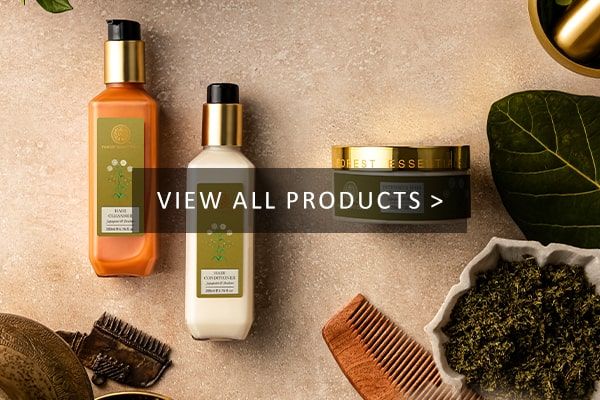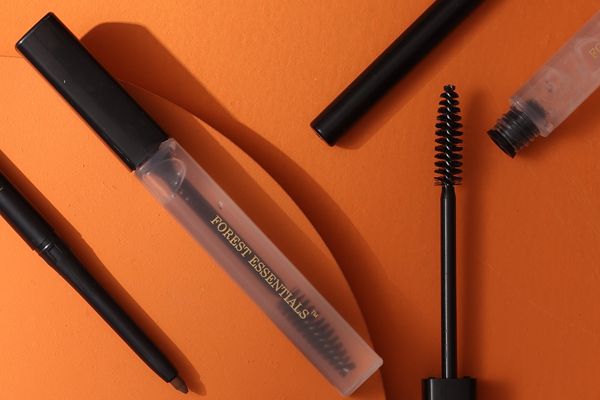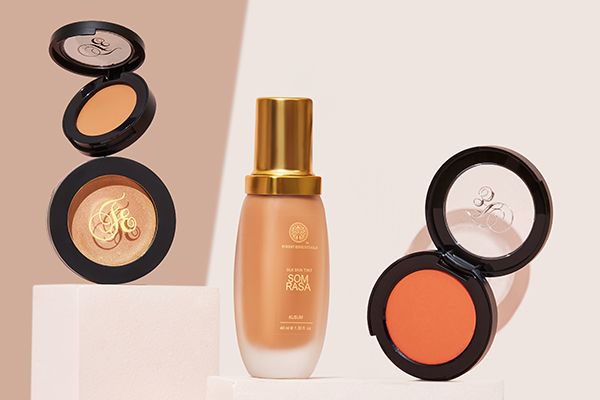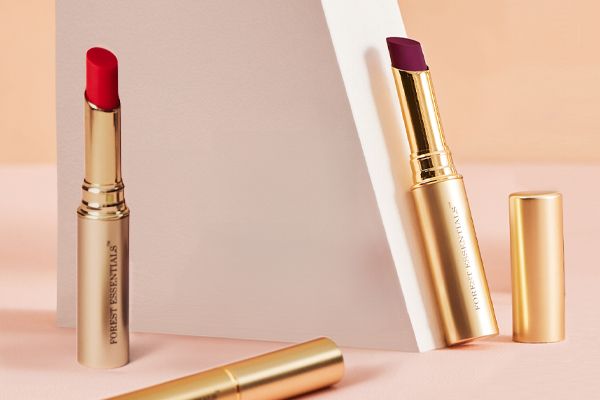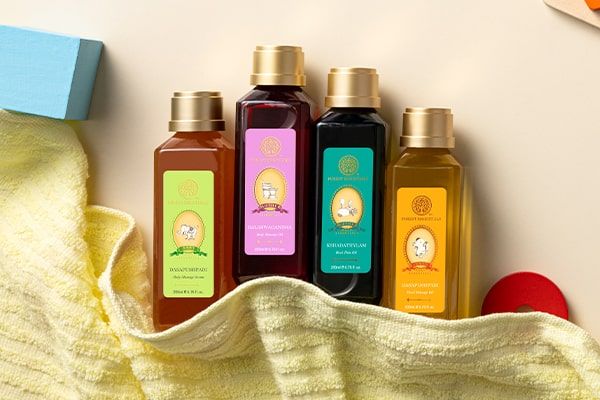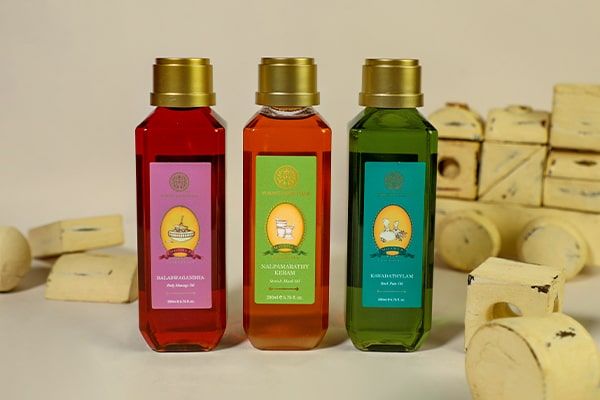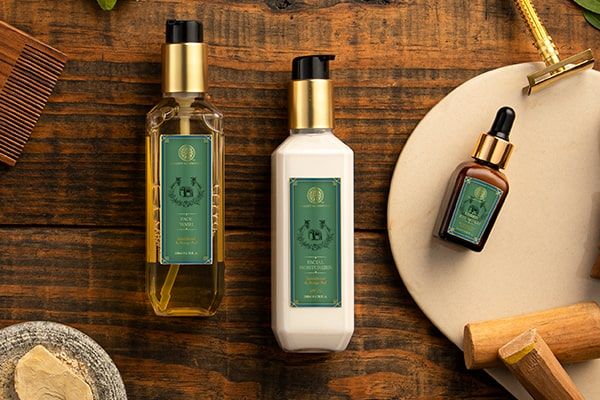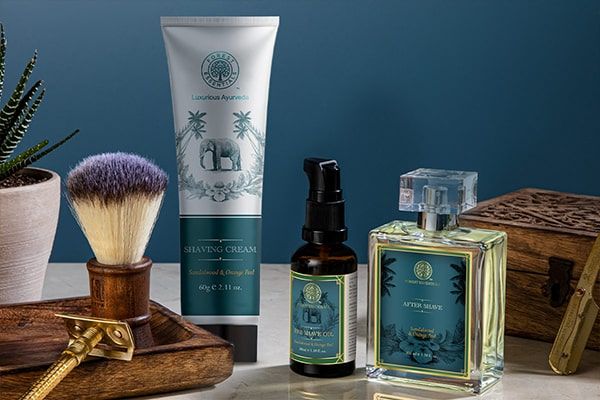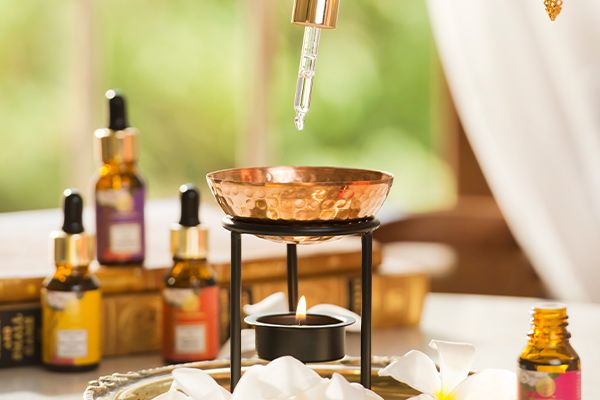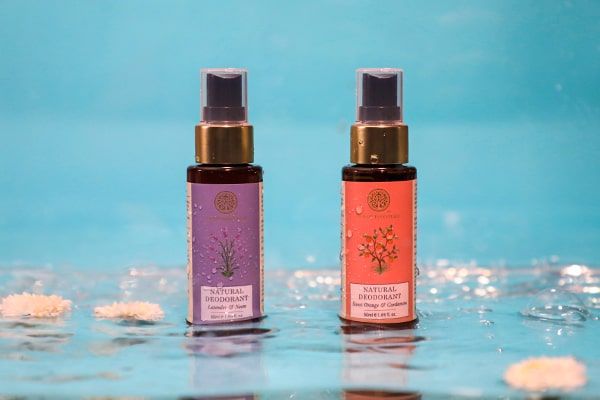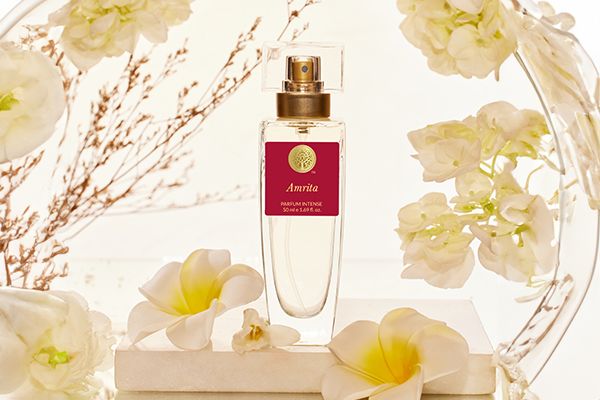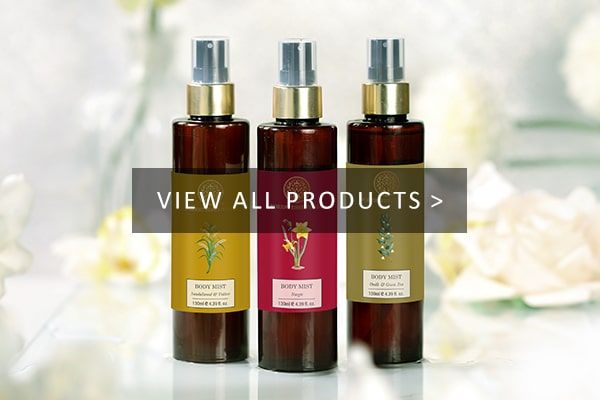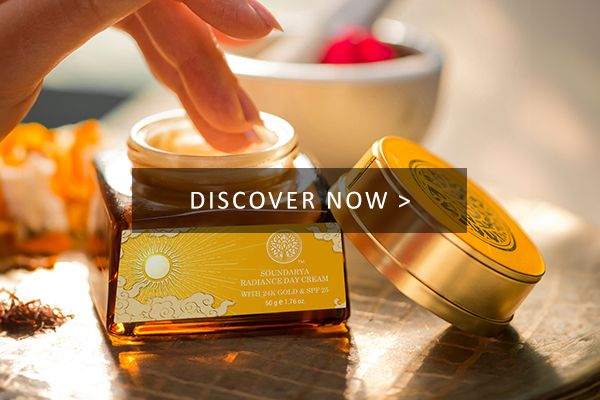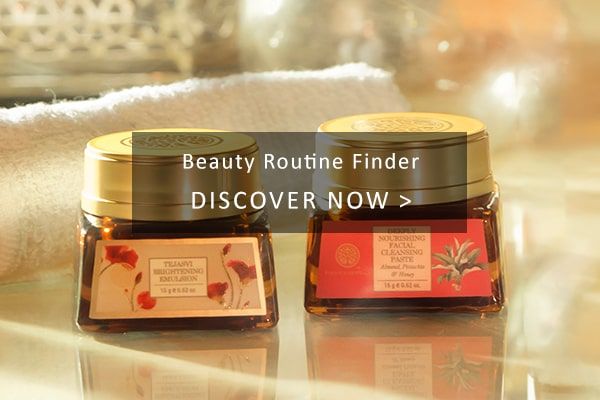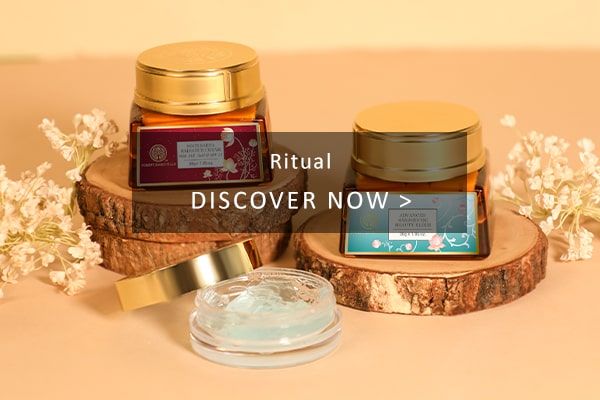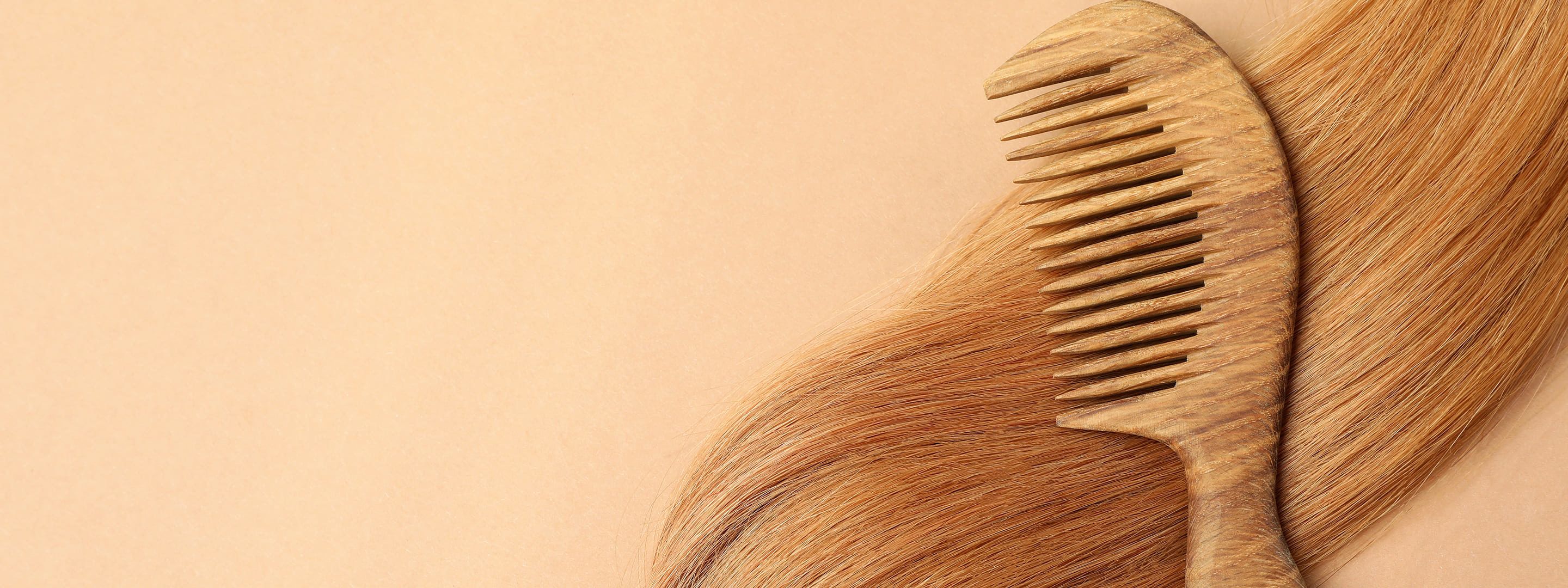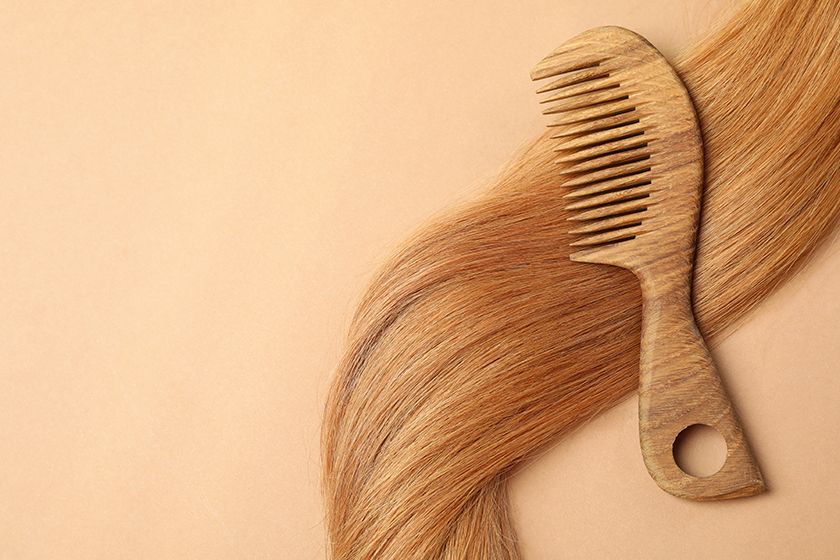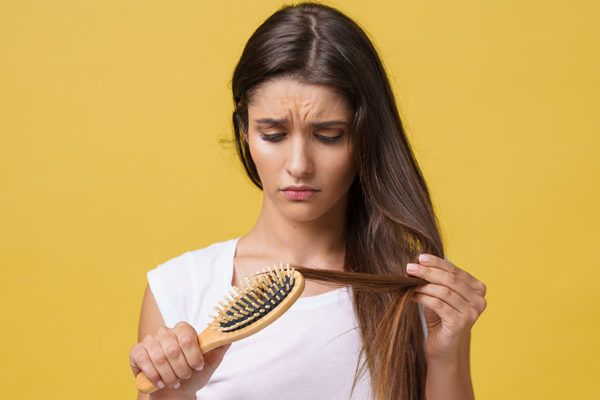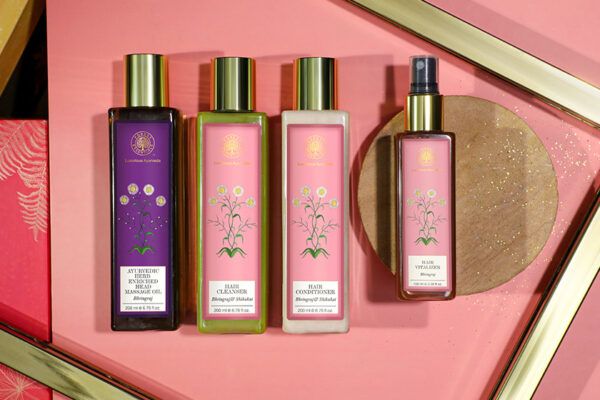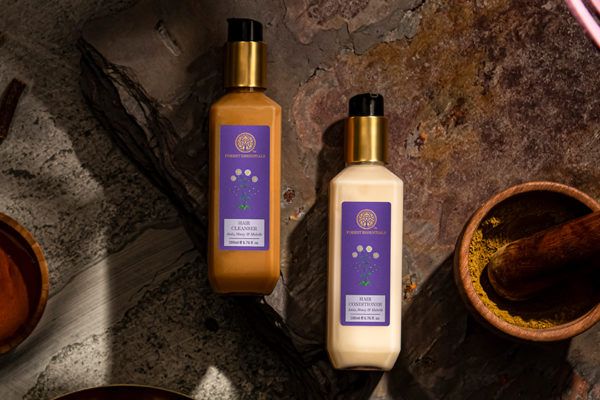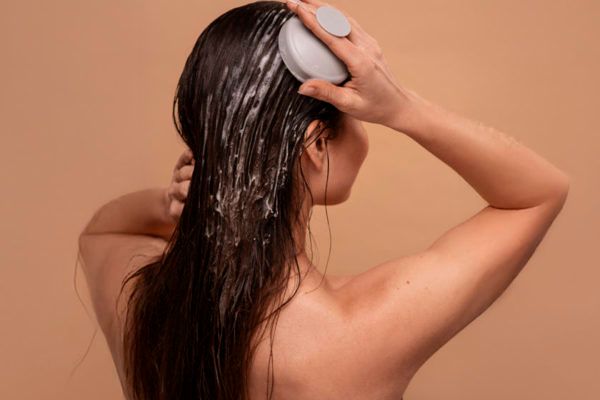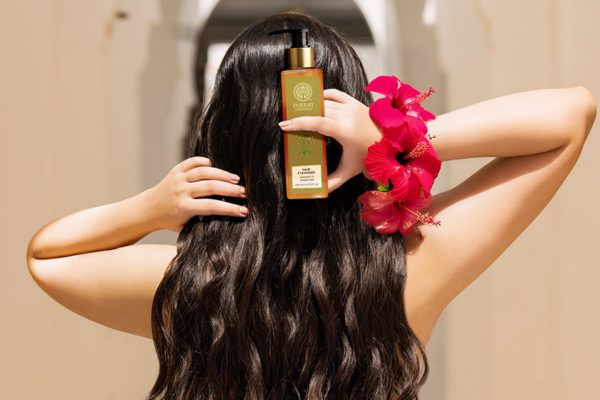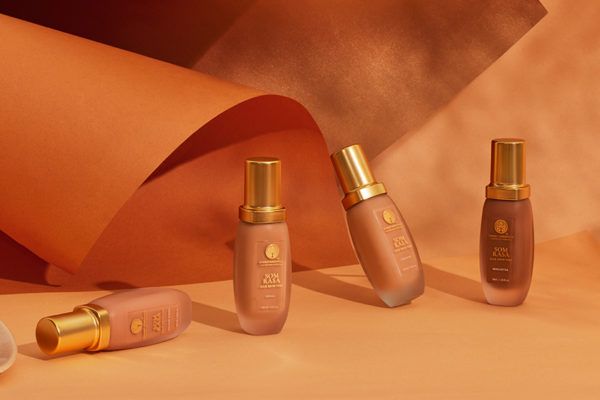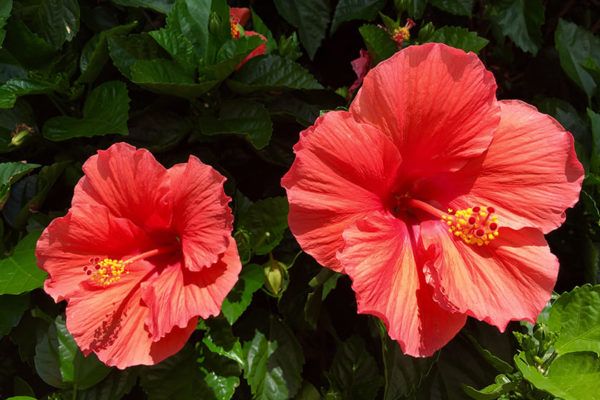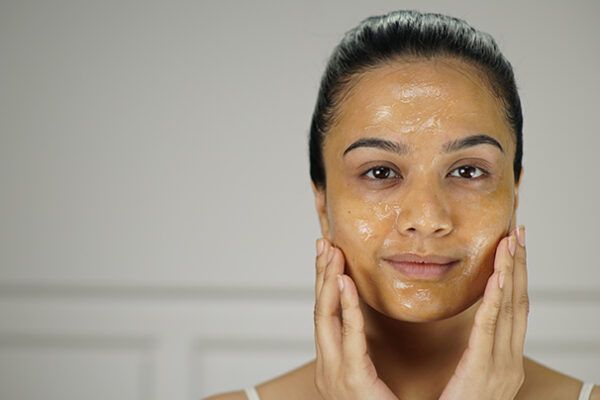Hair problems are like the Mondays of the beauty world- nobody likes them, but they’re a fact of life. Split ends, frizz, and hair loss are some of the more common hair issues from an endless hair problems list that can turn even the best of days into a nightmare. In this article, we’ll take on the most common hair problems and arm you with the knowledge to conquer them.
Here’s a list of 9 common hair problems and their solutions:
Hair Fall
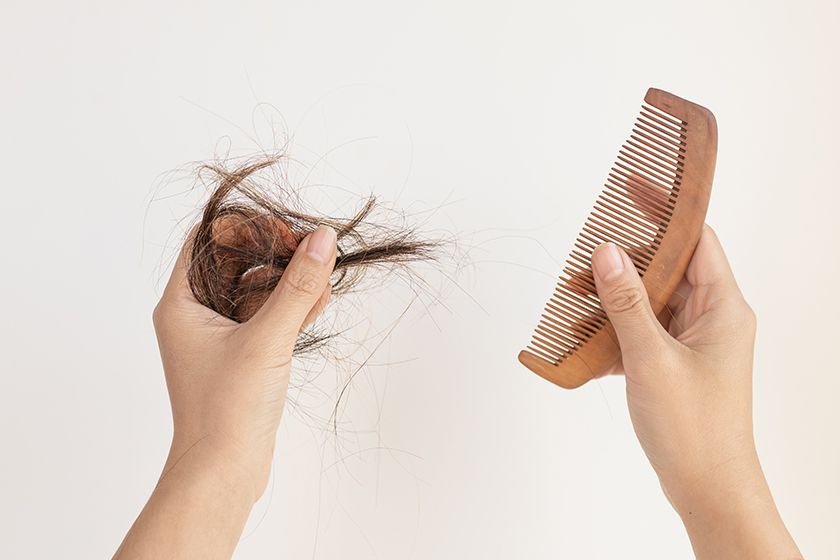
Do you look in the mirror and feel a twinge of sadness as strands of your hair fall away? It’s a feeling that is all too familiar and one that many others can relate to.
While hair fall is a very natural process, and it is common to shed 50-100 strands daily, the real hair issue begins when more hair falls out, and less hair grows in. As per Ayurveda, increased hair fall is termed khalitya, a hair problem primarily caused due to Pitta aggravation, and can be corrected with proper diet, lifestyle, Ayurvedic therapies, and Pitta-balancing keshya herbs.
Hair fall can also be caused due to dandruff, hormonal imbalances, stress, pregnancy & postpartum hair loss, and nutritional deficiencies.
Ayurvedic remedies to treat hair fall
- If the hair problem is due to a scalp infection or dandruff, applying a paste of Neem leaves helps in clearing any dandruff or fungal infection and naturally promotes scalp health & stops hair fall.
- If you are facing stress-related hair problems, nervine tonics can help. One can consume 1 Tsp of a herbal mixture of Brahmi, Jatamansi, Amla (Indian Gooseberry) & Shankhpushpi powder with a glass of water twice a day after meals.
- For pregnancy and postpartum induced hair fall, intake of essential micronutrients such as Iron and Calcium is vital, as during this period, there is a deficiency of these nutrients that may result in hair fall.
- For hair fall due to nutritional deficiencies, mix powdered Amla and White Sesame seeds in equal amounts and take 1 tsp of this mixture with water, twice a day.
Hair Care Regime for Hair fall
- Step -1 Oiling with –Bhringraj Head massage oil (2-3 times a week).
- Step -2 Cleansing with Bhringraj and Shikakai Hair Cleanser.
- Step -3 Conditioning with Bhringraj and Shikakai Hair Conditioner.
- Step -4 Application of Hair Vitalizer on the clean scalp between washes.
Chemically Treated Hair

Chemically treated hair can be a love-hate relationship. On the one hand, it allows us to transform our hair into a wide range of styles, and on the other hand, the chemicals used in these treatments can be harsh and damaging to our hair, leaving it dry, brittle, and prone to breakage.
If you have chemically treated hair, here are a few ways of dealing with the hair problem and keeping your mane healthy and strong:
- Avoid washing your hair too frequently, as it can strip it of its natural oils.
- Use a deep conditioning treatment regularly to restore moisture and nutrients to your hair.
- Avoid harsh chemicals, such as those found in hair styling products.
- Protect your hair from heat by using a heat protectant spray before styling, and limit the use of hot styling tools.
Hair Care Regime for Chemically Treated Hair
- Step -1 Oiling with –Japapatti Head massage oil (2-3 times a week).
- Step -2 Cleansing with Japapatti and Brahmi Hair Cleanser.
- Step -3 Conditioning with Japapatti and Brahmi Hair Conditioner.
- Step -4 –Weekly deep conditioning with Intensive Hair Repair Mask.
Dry Hair

Dry hair can be another frustrating hair problem, leaving us with lifeless, dull locks prone to frizz and breakage. Lack of or poor retention of moisture is a common cause of dry hair. Sometimes, other underlying issues, such as hormonal imbalance, anaemia, and hyperthyroidism, can also cause dryness.
As per Ayurveda, the imbalance in Vata Dosha causes excessive dryness. Extra nourishment in the form of oiling your hair 2-3 times a week with Almond oil, Castor oil, Olive Oil or Sesame oil processed with hair-strengthening herbs like Bhringraj, Licorice, Shatavari, Ashwagandha etc., is recommended.
Daily shampooing can rob your hair of its protective oils and lead to dryness. Try restricting your hair wash to once or twice a week. Also, ease up on things that make your hair more fragile, like sun & chlorine exposure, pollution, chemical treatments, and heat styling.
Hair Care Regime for Dry Hair
- Step -1 Oiling with –Japapatti Head massage oil (2-3 times a week).
- Step -2 Cleansing with Japapatti and Brahmi Hair Cleanser.
- Step -3 Conditioning with Japapatti and Brahmi Hair Conditioner.
- Step -4 –Weekly hair masking with Intensive Hair Repair Mask.
Dull Hair
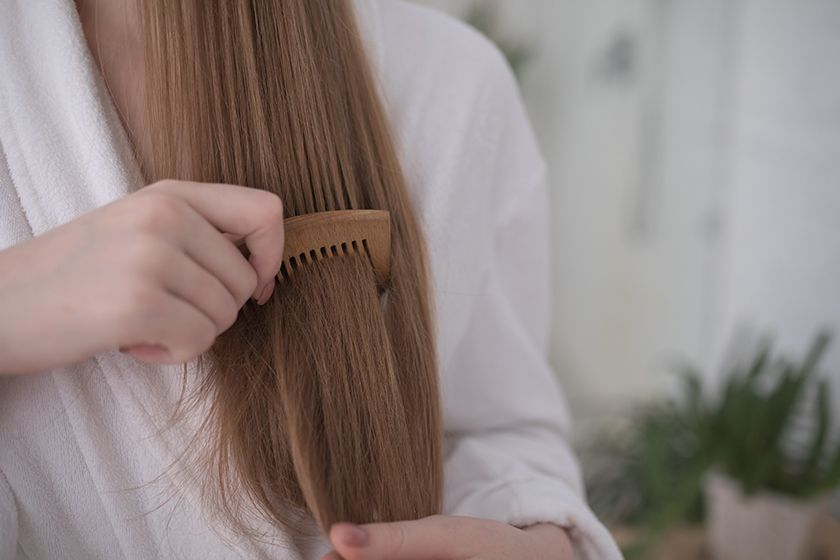
Dull hair often lacks lustre, feels rough & heavy, and may appear frizzy. Incorrect hair care practices, a diet deficient in essential nutrients, excessive heat styling, and sun exposure can cause dull hair. Hair might also get dull due to dirt, extra oils, dead skin cells, product buildup, and dandruff flakes.
Dry and dull hair are just like two sides of a coin. Although they are linked, dull hair and dry hair are different. Lack of hydration (water) and moisturisation (oil) can lead to dry hair, while dull hair refers to the matte texture of hair (a consequence of having dry hair) that lacks the reflected sheen of healthy hair.
Hair Care Regime for Dull Hair
- Step -1 Oiling with –Japapatti Head massage oil (2-3 times a week).
- Step -2 Cleansing with Amla Honey Mulethi Hair Cleanser.
- Step -3 Conditioning with Amla Honey Mulethi Hair Conditioner.
- Step -4 –Weekly hair masking with Intensive Hair Repair Mask.
Frizzy Hair

Frizzy hair can be the bane of our existence, turning even the sleekest hairstyles into a wild, unruly mess. Dry, dehydrated hair that lacks moisture is the leading cause of hair frizz. Ironically, humid, rainy weather tends to accentuate frizz since dry hair strives to collect moisture from the external environment, which causes each hair’s cuticle, or outside layer, to inflate.
Frizz might get worse from alcohol-containing products like styling gels and heat-producing styling equipment.
Ayurveda recommends deep nourishing treatments such as Shiroabhyanga (head massage with oils) & Shirolepa (medicated head pastes) to tame the frizz. As Frizzy hair results from Vata imbalance in the body, the Vata Balancing diet, lifestyle, herbs and hair practices are helpful.
Hair Care Regime for Frizzy Hair
- Step -1 Oiling with –Japapatti Head massage oil (2-3 times a week).
- Step -2 Cleansing with Amla Honey Mulethi Hair Cleanser.
- Step -3 Conditioning with Amla Honey Mulethi Hair Conditioner.
- Step -4 –Weekly Deep conditioning treatment with Intensive Hair Repair Mask.
Dandruff
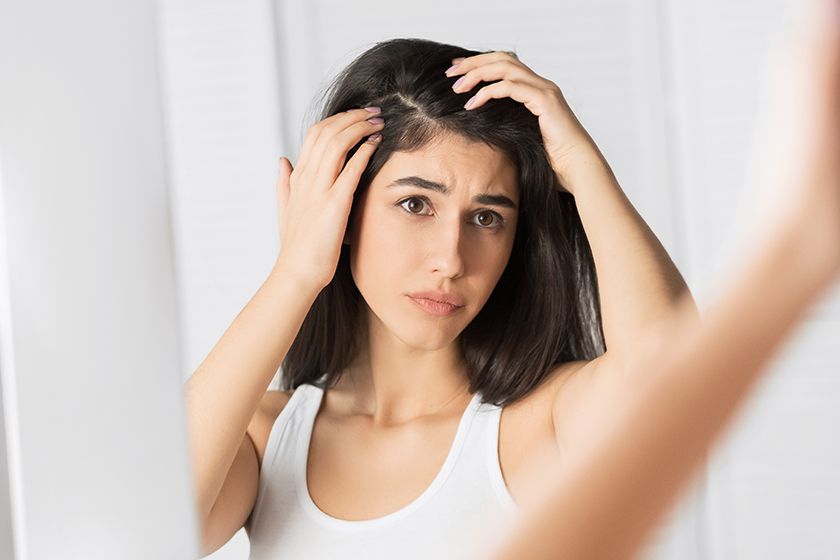
Dandruff can be a pesky hair problem, leaving us with an itchy, flaky scalp that won’t go away. In Ayurveda, dandruff is mentioned as “Darunaka”. It is caused by the vitiation of Vata and Pitta dosha, which affect the root of the hair follicles, creating dryness on the scalp. In an aggravated state, both doshas cause the production of specific impurities called ama. Impurities of the deep tissues and aggravated Vata-Pitta Dosha cause itching and patches on the scalp.
A combination of changes in diet and lifestyle patterns, along with internal and topical usage of a few herbs, work best on treating dandruff. The Ayurvedic herb, Bhringraj, is an antidote for dandruff or related hair problems.
Hair Care Regime for Dandruff
Step -1 Oiling with –Bhringraj Head massage oil (2-3 times a week).
Step -2 Cleansing with Bhringraj and Shikakai Hair Cleanser.
Step -3 Conditioning with Bhringraj Hair Conditioner.
Split Ends
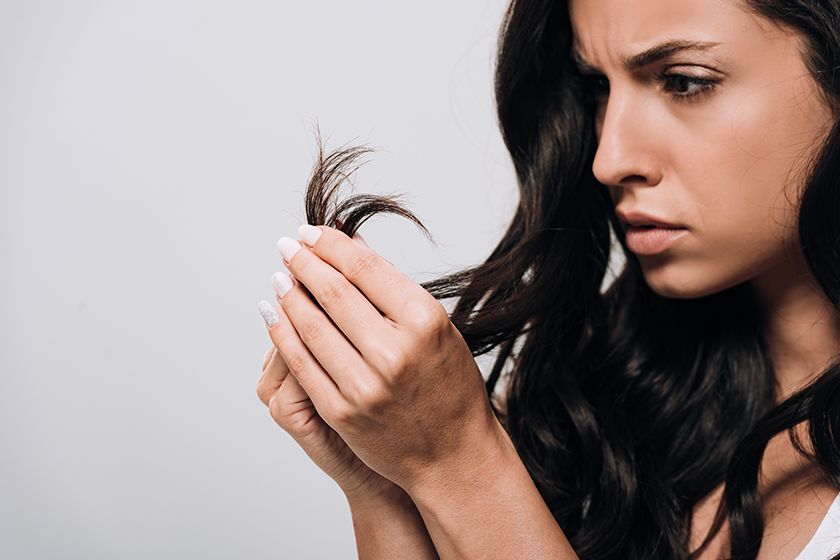
Oh, how we loathe those frayed, damaged ends that can ruin even the best hair days. They occur when the ends of your hair become dry, brittle & unravelled and may resemble the end of an unknotted rope. Exposure to extreme weather conditions and hair styling techniques such as blow drying, straightening, and twisting may cause split ends. Chemical hair products also cause split ends.
Although split ends can’t be repaired, some important tips for managing or avoiding split ends are:
- Get regular haircuts and trims, preferably every six weeks.
- Don’t wash your hair daily, and choose all-natural shampoos & conditioners that don’t contain harsh ingredients.
- Deep condition with hair masks to conceal split ends and improve the overall quality of hair.
- Avoid heat styling or use a heat protectant spray to minimise damage.
Hair Care Regime for Split Ends
- Step -1 Oiling with –Japapatti Head massage oil (2-3 times a week).
- Step -2 Cleansing with Amla Honey Mulethi Hair Cleanser.
- Step -3 Conditioning with Amla Honey Mulethi Hair Conditioner.
- Step -4 –Weekly deep conditioning with Intensive Hair Repair Mask.
Oily Hair and Scalp
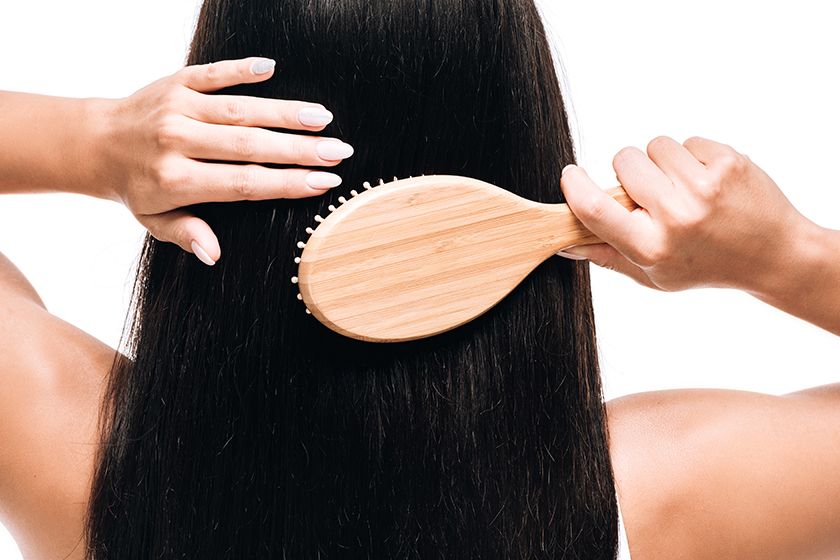
Oily hair is often the result of the scalp producing more oil because the hair is getting dried out from various products and overwashing hair and scalp. Overwashing or excess scrubbing during shampooing can irritate the scalp, causing more oil. Once you strip your hair of its natural oils, your scalp goes into oil production overload.
It is advised to avoid frequent washing of hair and scalp. It’s also important to rinse the hair in cool water for a minimum of 30-40 seconds to ensure that all shampoo and conditioner are out of the hair and help close the cuticles, reducing damage to your hair.
As per Ayurveda, oily hair and scalp are due to the aggravation of Kapha Dosha. Following a Kapha hair care regime helps balance the dosha and treats excessive oily scalp and hair.
A Kapha hair care regime focuses on hair and scalp cleansing 2-3 times a week with natural hair cleansing herbs like Bhringraj, Shikakai, Hibiscus flowers and Triphala powder.
Hair Care Regime for Oily hair & scalp
Step -1 Cleansing with Bhringraj and Shikakai Hair Cleanser (daily/ alternate days).
Step -2 Conditioning with Bhringraj Hair Conditioner (alternate days)
Premature Greying of Hair
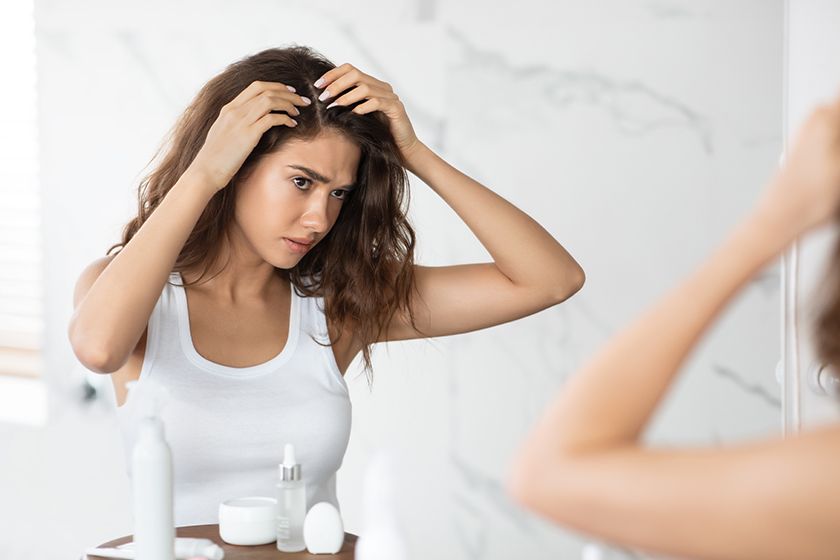
Grey hair is the ultimate sign of wisdom and experience…or so they say. But what if you’re not quite ready for the silver fox look?
Hair goes grey when colour-producing cells stop producing the pigment melanin. Generally, melanin production in the follicles decreases with age, and the hair turns grey from the mid-thirties. In some cases, the early occurrence of grey hair is caused by an individual’s genetics.
According to Ayurveda, premature grey hair is caused due to Pitta aggravation in the body, which can be controlled through natural Ayurvedic techniques and lifestyle changes.
A homemade oil using Mustard, Sesame and Amla is an Ayurvedic recipe for premature greying. Use the oil on your strands before you sleep, and rinse off with a clarifying shampoo the following day.
Hair Care Regime for Premature greying
Step -1 Oiling with Bhringraj Head Massage Oil (2-3 times a week).
Step -2 Cleansing with Bhringraj and Shikakai Hair Cleanser.
Step -3 Conditioning with Bhringraj and Shikakai Hair Conditioner.
Although hair problems may seem like a drag, they can be an opportunity to take control and give your locks the love and attention they deserve. With patience and the right approach, you can overcome any hair problem and achieve the healthy hair you’ve always wanted.
FAQs:
How can I solve all hair problems?
Following four simple rules can help solve almost all hair problems.
- A healthy well balanced diet with all essential
- Using all-natural and organic hair products
- Maintaining a healthy mind and emotional balance.
- Following good hair practices most of the time.
How can I get rid of my split ends?
- Get regular haircuts and trims, preferably every 6-8 weeks.
- Don’t wash your hair daily.
- Choose all-natural shampoos that contain no harsh ingredients.
- Use a conditioner after shampooing the hair.
How often should I get my hair cut?
In 10-12 weeks. It may seem counterintuitive, but getting your hair cut more frequently will likely result in longer hair since you prevent the hair cuticle from splitting at the end.
How often should I wash my hair?
There is no rule of thumb that works for everyone. If your scalp gets oily and greasy quickly, you can wash it with a mild shampoo every other day. A normal-to-dry scalp can be washed twice or thrice a week.




